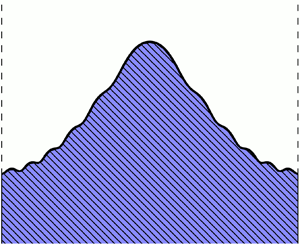Article contents
Exponential asymptotics for steady parasitic capillary ripples on steep gravity waves
Published online by Cambridge University Press: 30 March 2022
Abstract

In this paper, we develop an asymptotic theory for steadily travelling gravity–capillary waves under the small-surface tension limit. In an accompanying work (Shelton et al., J. Fluid Mech., vol. 922, 2021) it was demonstrated that solutions associated with a perturbation about a leading-order gravity wave (a Stokes wave) contain surface-tension-driven parasitic ripples with an exponentially small amplitude. Thus, a naive Poincaré expansion is insufficient for their description. Here, we develop specialised methodologies in exponential asymptotics for derivation of the parasitic ripples on periodic domains. The ripples are shown to arise in conjunction with Stokes lines and the Stokes phenomenon. The resultant analysis associates the production of parasitic ripples to the complex-valued singularities associated with the crest of a steep Stokes wave. A solvability condition is derived, showing that solutions of this type do not exist at certain values of the Bond number. The asymptotic results are compared with full numerical solutions and show excellent agreement. The work provides corrections and insight of a seminal theory on parasitic capillary waves first proposed by Longuet-Higgins (J. Fluid Mech., vol. 16, issue 1, 1963, pp. 138–159).
Information
- Type
- JFM Papers
- Information
- Copyright
- © The Author(s), 2022. Published by Cambridge University Press
References
REFERENCES
A correction has been issued for this article:
- 11
- Cited by
Linked content
Please note a has been issued for this article.


